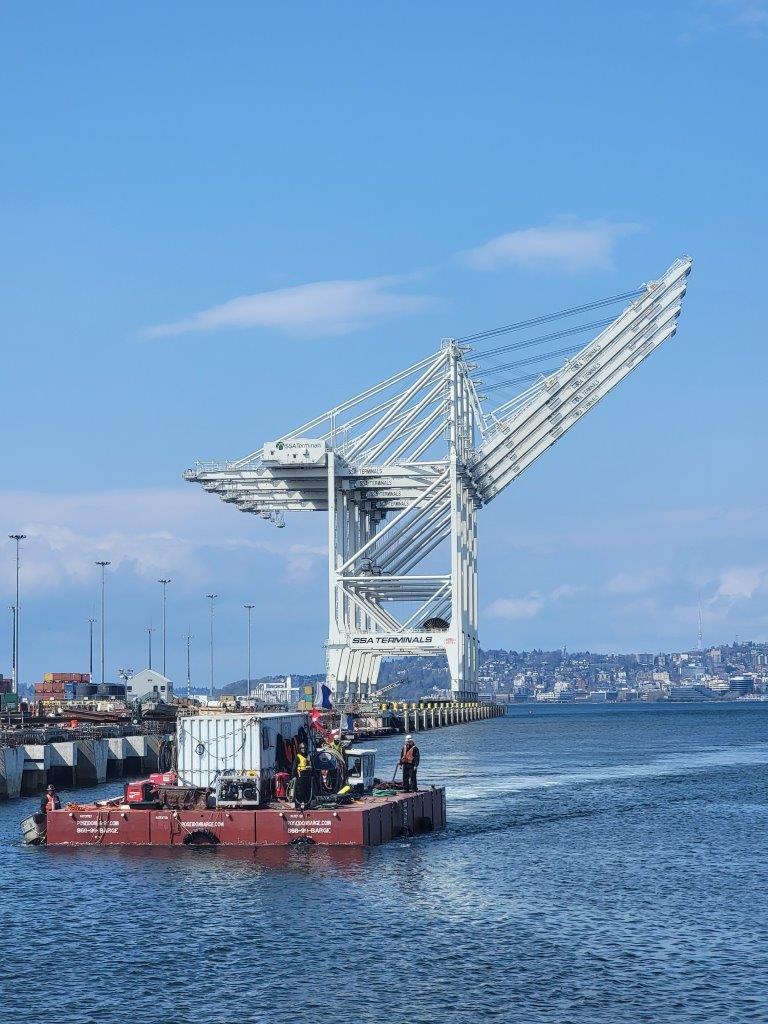
Snoqualmie Falls Cofferdam Construction a Feat in High Water
Constructing cofferdams in moving, high water poses challenges, we’ve found. Western Washington’s “dry season” wasn’t so dry this year. June 1 marked the opening of our five-month in-water window at Puget Sound Energy, Inc.’s Snoqualmie Falls Hydroelectric Redevelopment Project; unfortunately this date rolled around in the middle of record-tying consecutive days with rain. The Snoqualmie River raged at up to three times its average flow, setting a record of 12,178 cubic feet per second on June 3. The resulting high flows caused swift currents and deeper-than-anticipated water, nullifying our original plan to use a Portadam in the river as our first temporary cofferdam. These unfavorable conditions, especially for the cofferdams just feet upstream of the 300-foot waterfall, led to some serious brainstorming. Barnard crews and a slew of subcontractors went to work. Over the next few months, the crews installed two steel combination wall cofferdams to isolate the power plants from the river and allow work to proceed outside of our in-water window. Installation of the combination walls involved blasting and excavating trenches up to 12 feet into the river’s solid bedrock and setting a series of interlocking H-pile beams and sheet piles, before backfilling the trench with concrete. We completed placement of these semi-permanent steel cofferdams in early October, well within the in-water window – our first major milestone is now behind us.
Achieving this milestone involved teamwork with PSE and Klohn Crippen Berger as well as the hard work of many beyond our Barnard crews. Key subcontractors and suppliers working with us included PND Engineers, Inc. (Super Sack cofferdams); HDR Engineering, Inc. (steel cofferdams); Icicle Creek Engineers (geotechnical inspection); Sub Terra, Inc. (blasting monitoring); Kleinfelder (general inspection); Associated Underwater Services, Inc. (diving and underwater work); Abercrombie Pipeline Services (welding and pilebuck support); and J Harper (demolition). Stay tuned: with cofferdams in place, work on the power plants proceeds, and that includes moving into tunnel work.







